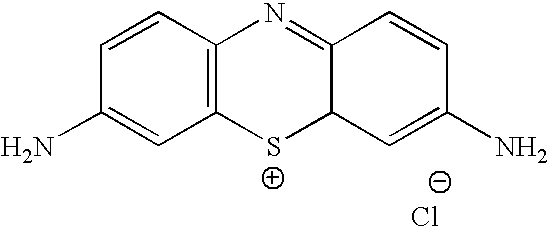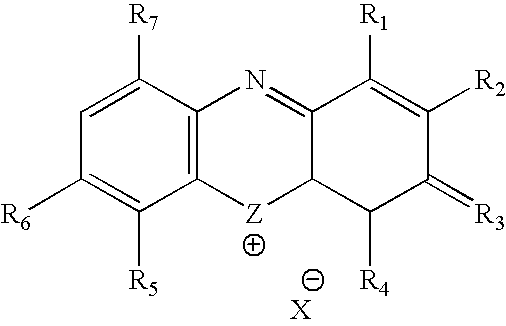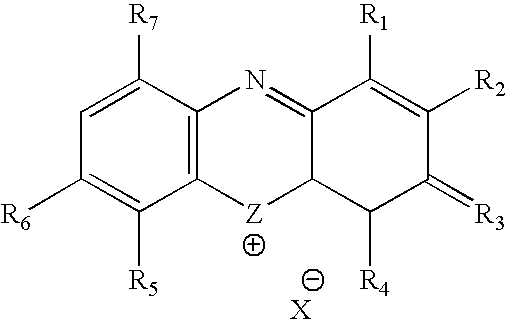Methylene Blue Therapy of Viral Disease
a technology of hepatitis virus and methylene blue, which is applied in the field of methods, can solve the problems of chronically infected, liver damage, liver fat deposits, etc., and achieve the effect of selectively inactivating or inhibiting hepatitis infection
- Summary
- Abstract
- Description
- Claims
- Application Information
AI Technical Summary
Benefits of technology
Problems solved by technology
Method used
Image
Examples
example 1
[0116] Clinical Trial to Demonstrate Efficacy in Reduction in Hepatitis C Viral Load by Administration of Oral Methylene Blue.
[0117] This was an open label study of methylene blue assessing its effectiveness in reducing serum viral load and treating the symptoms associated with chronic hepatitis C.
[0118] Clinical Study:
[0119] The study was to evaluate the effectiveness of Methylene Blue in reducing the viral titer and alleviating the related symptoms of chronic Hepatitis C infection. The study design was an open label study to assess the reduction of viral titres in patients over a 24 week treatment period and subsequent 4 week follow-up period.
[0120] The dose was 65 mg of Methylene Blue twice daily in the capsules.
[0121] They type of subjects were male and female subjects aged between 18 and 70 with proven chronic hepatitis C, 60% with and 40% without cirrhosis, who are refractory to, unwilling, or unable to take interferon / ribavarin therapy. A total of 60 subjects were enroll...
PUM
| Property | Measurement | Unit |
|---|---|---|
| wavelengths | aaaaa | aaaaa |
| body weight | aaaaa | aaaaa |
| wavelengths | aaaaa | aaaaa |
Abstract
Description
Claims
Application Information
 Login to View More
Login to View More - R&D
- Intellectual Property
- Life Sciences
- Materials
- Tech Scout
- Unparalleled Data Quality
- Higher Quality Content
- 60% Fewer Hallucinations
Browse by: Latest US Patents, China's latest patents, Technical Efficacy Thesaurus, Application Domain, Technology Topic, Popular Technical Reports.
© 2025 PatSnap. All rights reserved.Legal|Privacy policy|Modern Slavery Act Transparency Statement|Sitemap|About US| Contact US: help@patsnap.com



